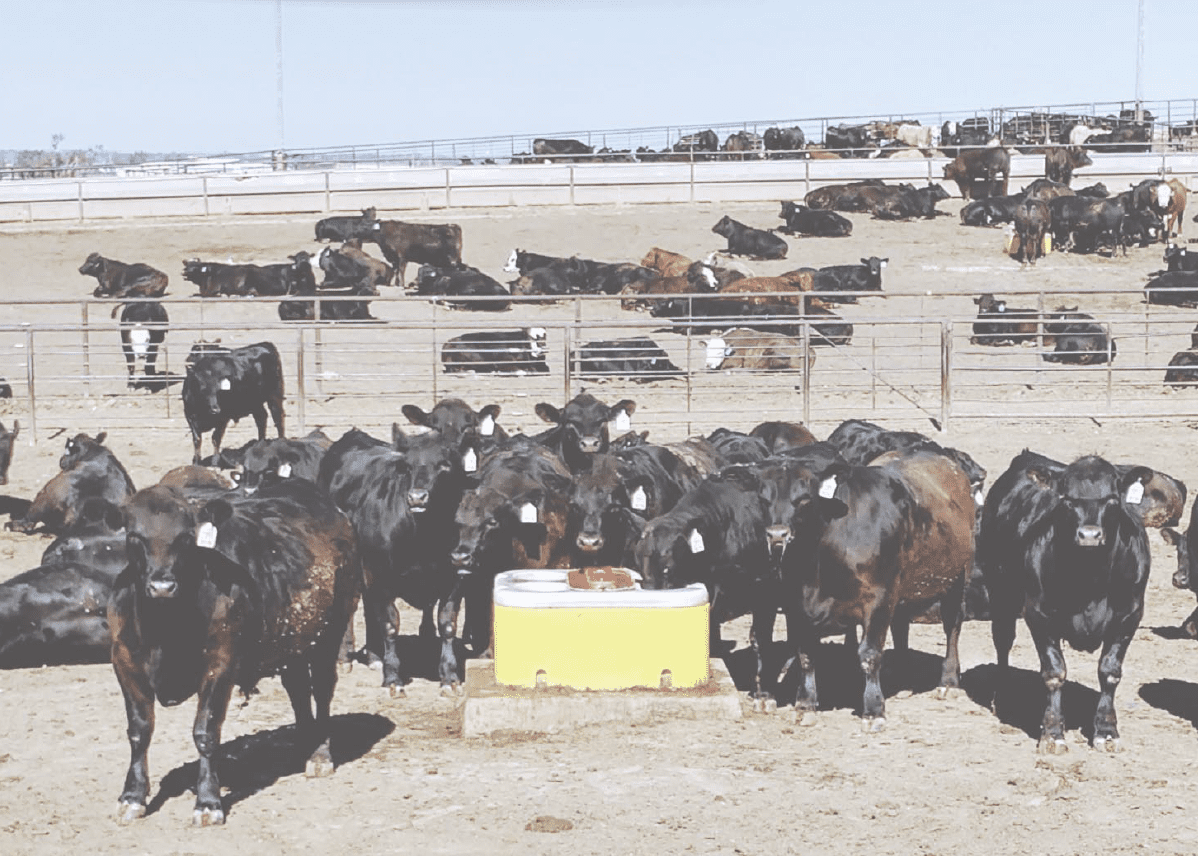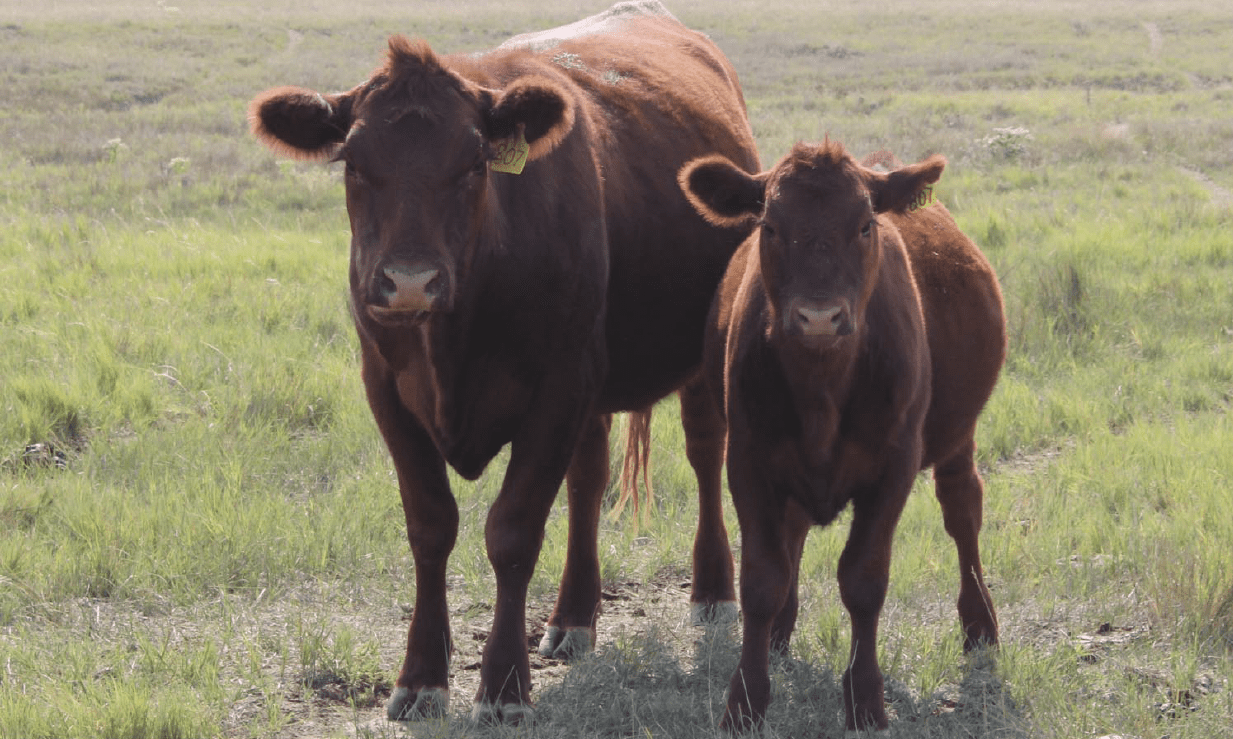

Cattlemen all over the country tend to pay a lot of attention to weather forecasts.
That is because all of us know that the single biggest consistent factor influencing the difficulty and financial success of our operations is weather.
Here at the USDA-ARS U.S. Meat Animal Research Center (USMARC), we often laugh at the thought that there are only about 60 days a year when everybody wants to be a cowboy.
Pretty much the rest of the time we are faced with conditions that contribute to the “cowboy” appearance and character that we all acquire if we are blessed with enough years in this business.
Of all the climatic conditions that challenge the health and performance of our cattle, heat can be one of the most difficult to manage.
Most of us are well equipped to handle cold and snow, but what can we do to navigate extreme heat?
In this article, I will offer four tools or tips you can use regardless of whether you are in the feedlot sector trying to keep cattle performing with minimal losses or you are a cow/calf stocker operator trying to get cows bred and maximize grazing performance.
These four tools are: preparation and planning, increasing access to water tanks and sprinklers, access to shade, and adjusting the timing of working and processing events.

Before I discuss ways to beat the heat, I think it is important to define what really causes heat stress in our livestock.
There are five climatic elements that contribute to heat stress.
Understanding what “normal” is for these in your ranch or feedlot and when a change in these elements is a cause for concern is the first step in managing heat stress.
The five key factors we need to focus on are: solar radiation, ambient air temperature, relative humidity/dew point, windspeed, and nighttime cooling.
In my career, I have experienced a lot of variation in how these elements affect cattle, depending on where the operation is located.
For example, a 104-degree day in southwest Kansas will not have too much of an effect on cattle given that there is often a 30 mph “breeze” and humidity in the 20 to 30 percent range.
On the other hand, an 85-degree day in central Nebraska with no breeze and relative humidity in the 60s and 70s or higher can be extremely stressful to cattle.
There are two other variables to heat stress that compound the five factors that I just outlined: duration of the heat stress period and suddenness of the onset of the stressful conditions.
Cattle can and do adapt to heat, admittedly some breeds better than others.
Regardless of the breed however, a quick change to the stressful range of any of the five factors can be extremely tough on cattle.
It is also important to remember that heat stress is cumulative, especially without adequate cooling at night.
There is something magical about the number 70 in regard to temperature and dewpoint.
If either the temperature or dewpoint does not drop below 70 at night, little to no dissipation of the heat load taken on by the cattle during the day will occur.
This will result in much lower tolerance to heat the following day or days. Besides 70, the other critical number is three.
If we go three days without dropping temperature and dewpoint below 70, the chances of the heat having an adverse effect on any and all classes of livestock ramps up significantly.
To illustrate this effect more clearly, if we have a sudden onset, insufficient night cooling, and a span of three days or longer, we often see significantly increased mortality and other related problems, especially in the feedlots, unless we provide mitigation.
Step one in addressing heat stress is to make sure you are prepared – ahead of time.
Day three or four in the scenario I just described is too late to implement any of the other three strategies we use to combat heat stress.
It is too late to get extra water tanks out, alter work schedules, or provide shade in the middle of the heat event.
Obviously, we need to plan ahead to successfully implement any of our strategies.
Not only is heat stress a risk to our animals, but it is a risk to our employees and ourselves as well, and the height of a heat event is not the time to add extra tasks to our employees.
Consequently, planning and preparation are the most important.
We usually know a few days in advance that we have a potential heat event coming, which gives us time to plan and implement.
Much like a blizzard, if we wait until the storm starts, we are already too late.
The second most important tool, next to preparation and planning, and by far most effective is adding extra water sources for our livestock.
Most of our facilities are equipped with stock tanks that are adequate during the majority of the year; however, during periods of extreme heat, they often are inadequate to meet the increased water demands placed on them by our livestock.
This is especially true for facilities that do not have shade available to the cattle.
If there is only one thing that you implement from reading this article, let it be this, because nothing cools cattle down more quickly than abundant water available anytime they want it.
I have been amazed during heat events how many thousands of extra gallons of water are consumed by the feedlot cattle when additional stock tanks are provided.
You will also notice improvement in the comfort and performance of the cattle.
This is not only true in the feedyards, but it also helps in pasture cattle as well, especially during times of increased handling such as branding or artificial insemination (AI).

The other source of water that we can add is sprinklers to cool the cattle down.
While this is also a very effective way to provide cattle with comfort and get them through heat events, it needs to be well calculated before being implemented.
Cattle have to be acclimated to the sprinklers prior to the heat event.
We also have to be careful when we use sprinklers because cattle very quickly can become dependent on this method and we will have to continue using it after the heat event has returned closer to normal.
The primary goal in the use of sprinklers is not to cool the cattle down directly but rather to cool the surface of the pens and provide cattle with a cooler place to stand and lay down.
We must be judicious using sprinklers to not create excess mud and pen maintenance issues.
In short, use increased tanks first and always, and sprinklers only in emergency situations.
Giving cattle access to shade, especially in confinement such as feedyards, is another great way to help cattle beat the heat.
This strategy is usually not one that can be implemented very quickly and often requires significant investment in infrastructure.
There are many effective types of shade structures that I have seen in various feedyards across the country, and each have their pros and cons.
In general, if you are going to invest in shade for your operation, do your research and invest in a structure that fits your needs.
Avoid the pitfall of not putting your shade high enough. Failure to do so will actually reduce air flow and create pen maintenance issues in a very short period of time.
You also need to consider the winter climate in your area and either construct a shade structure with removable canopies, like we have at USMARC, or construct one strong enough to stand up to a snow and ice load if appropriate for your climate.
Shade can and will improve the comfort for your cattle and it often will limit the need for having to intervene with sprinklers during periods of extreme heat.
At USMARC, whenever possible, we avoid processing, shipping, or any event that results in extra movement of our cattle during times of extreme heat.
This is done for the obvious reason that extra movement by our animals increases body heat and can quickly elevate the amount of heat stress an animal is under.
We all know that the need to move cattle in times of heat does not go away and cannot always be put off until another day.
For example, when breeding animals during extreme heat, USMARC’s AI approach is to breed only in the early morning, and we only pull cows in estrus in the morning.
When heat checking in the evening, we note the cows we need to breed tomorrow but we do not attempt to bring them into the corrals when the temperatures are high.
Conventional thinking on AI suggests that breeding twice per day is the best way to maximize conception.
We have found that once per day breeding with the right hormone protocols achieves the same or better conception when compared to morning and evening breeding.
In addition to breeding, we strive to have all animal activities completed by 10:30 in the morning to avoid the heat of the day.

Not every heat event will require all the tips discussed in the article, while other heat events will test every bit of knowledge and fortitude we have.
It is my hope that you found a couple of valuable insights from this article that you are able to successfully implement in your operation.
After all, at the end of the day, doing all we can to provide optimal care and comfort of our livestock is our priority and what we stand for.
It may only be fun to be a cowboy 60 days a year, but we are stockmen all day, every day.
Chad Engle grew up in a diversified cattle and farming operation in Nebraska. He has spent the last 20 years in the cattle industry, working in a variety of capacities from sale barns and ranches to a 120,000 head Kansas feedyard before joining U.S. Meat Animal Research Center (USMARC) in 2008. He is currently the Livestock Manager at USMARC, where they have cow-calf, feedlot, sheep, swine and horses. Chad also runs cows and operates a feedyard at home with his wife and two children.
Get all Doc Talk episodes straight to your email inbox!